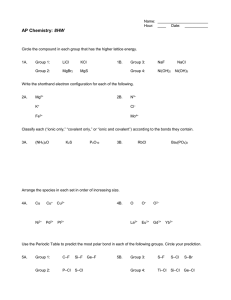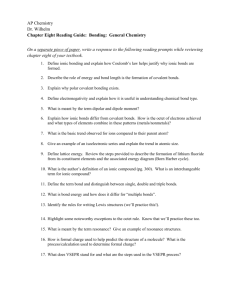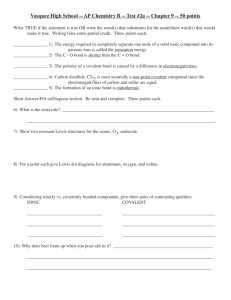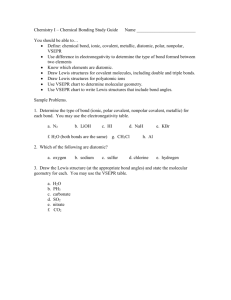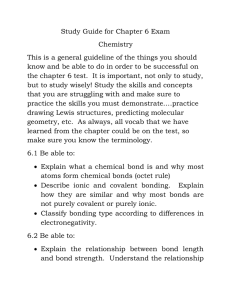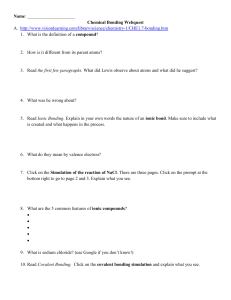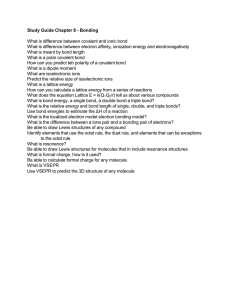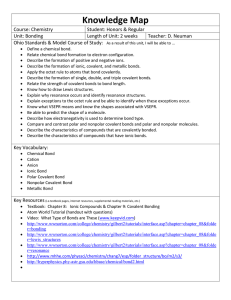Study Guide: Chemical Bonding
advertisement
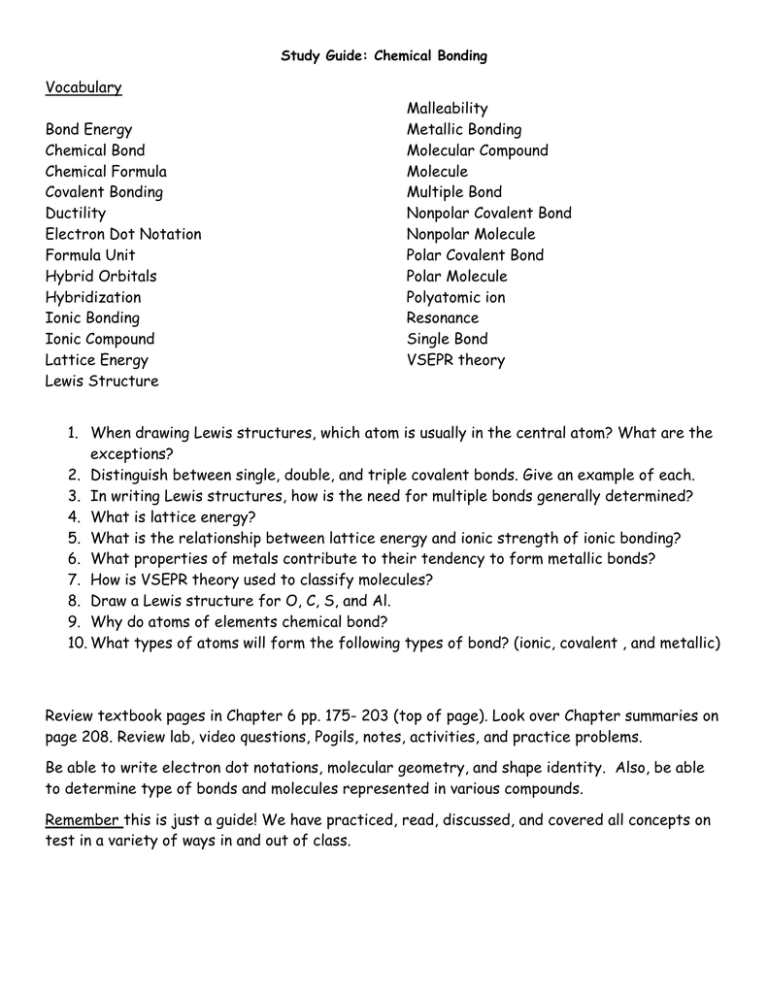
Study Guide: Chemical Bonding Vocabulary Bond Energy Chemical Bond Chemical Formula Covalent Bonding Ductility Electron Dot Notation Formula Unit Hybrid Orbitals Hybridization Ionic Bonding Ionic Compound Lattice Energy Lewis Structure Malleability Metallic Bonding Molecular Compound Molecule Multiple Bond Nonpolar Covalent Bond Nonpolar Molecule Polar Covalent Bond Polar Molecule Polyatomic ion Resonance Single Bond VSEPR theory 1. When drawing Lewis structures, which atom is usually in the central atom? What are the exceptions? 2. Distinguish between single, double, and triple covalent bonds. Give an example of each. 3. In writing Lewis structures, how is the need for multiple bonds generally determined? 4. What is lattice energy? 5. What is the relationship between lattice energy and ionic strength of ionic bonding? 6. What properties of metals contribute to their tendency to form metallic bonds? 7. How is VSEPR theory used to classify molecules? 8. Draw a Lewis structure for O, C, S, and Al. 9. Why do atoms of elements chemical bond? 10. What types of atoms will form the following types of bond? (ionic, covalent , and metallic) Review textbook pages in Chapter 6 pp. 175- 203 (top of page). Look over Chapter summaries on page 208. Review lab, video questions, Pogils, notes, activities, and practice problems. Be able to write electron dot notations, molecular geometry, and shape identity. Also, be able to determine type of bonds and molecules represented in various compounds. Remember this is just a guide! We have practiced, read, discussed, and covered all concepts on test in a variety of ways in and out of class.

